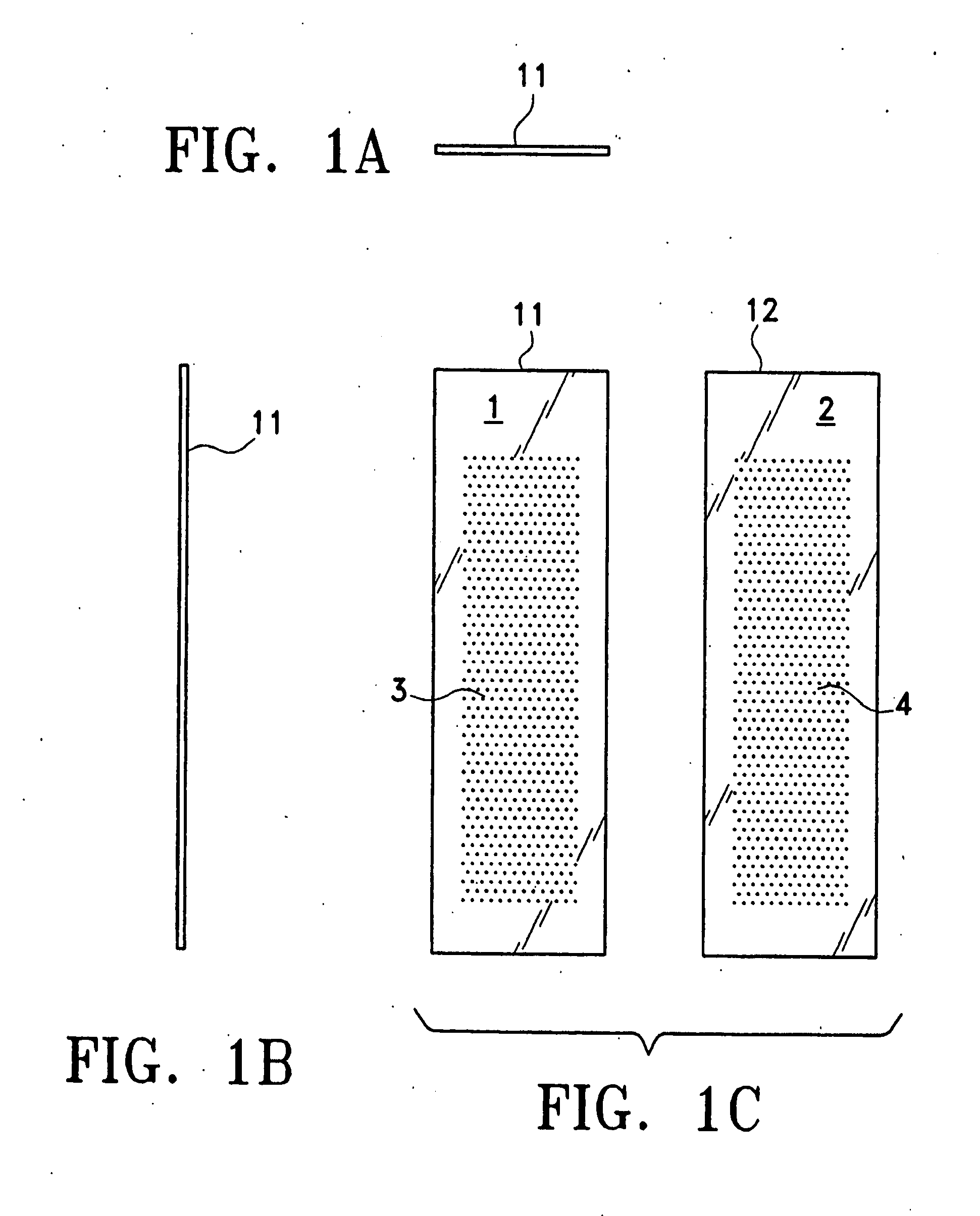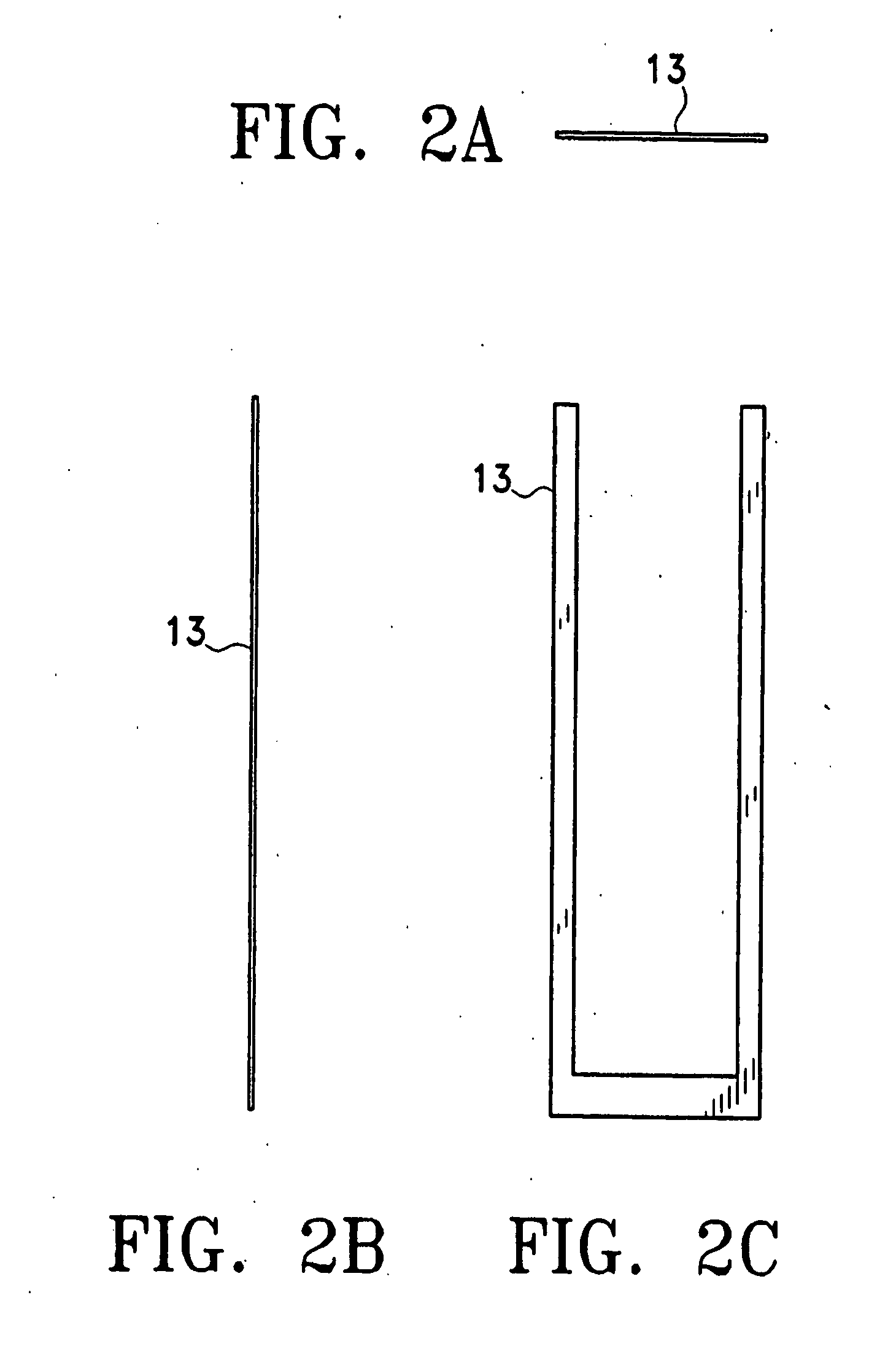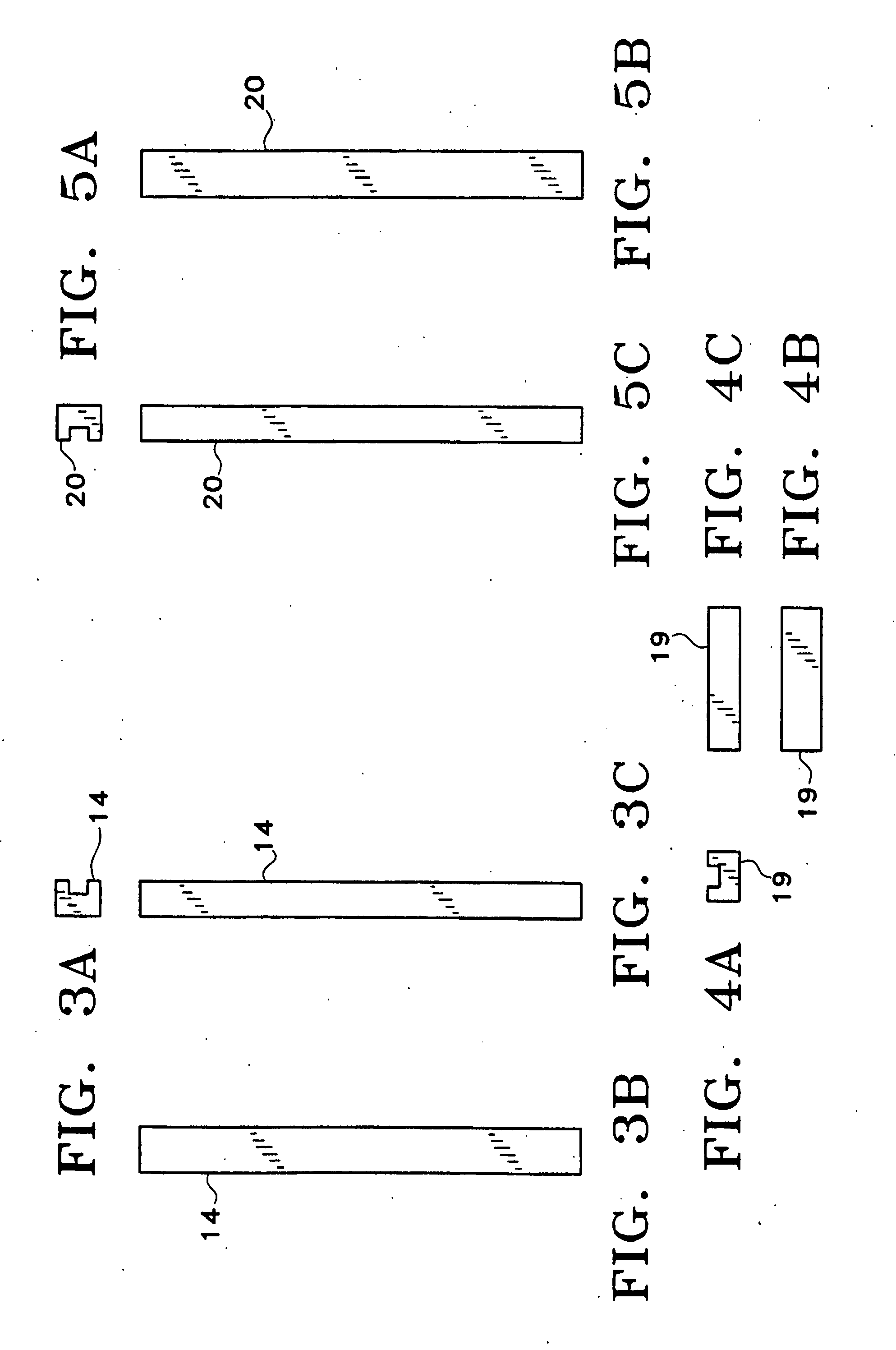Multi-array systems and methods of use thereof
a multi-array and array technology, applied in the field of microarray assays, can solve the problems of difficult preparation, short supply, and difficulty in detecting nucleic acids that are available only in small volumes and small quantities, and achieve the effect of minimizing the sample volume used
- Summary
- Abstract
- Description
- Claims
- Application Information
AI Technical Summary
Benefits of technology
Problems solved by technology
Method used
Image
Examples
example 1
Use of a Double-Array System in a Hybridization Assay
[0123] Two microarrays, an HO5 ExpressChip™ DNA microarray (Mergen, San Leandro, Calif.) and a custom DNA microarray called “CH1”, were used in a hybridization assay. The oligonucleotides on each of the microarrays were designed using an algorithm that selects the optimal 30 contiguous bases that uniquely match with GenBank's human database, with minimal variation in Tm and GC contents, low nucleotide repetition, size restriction (30-mer), and consistent position within the gene sequences (relative to mRNA 3′ end). Each microarray has approximately 12,000 sense oligonucleotides printed on it. The gene list for the HO5 DNA microarray is available at the website www.mergen.com / HO5 / HO5finder.asp. All the oligonucleotides on the microarrays are 30 bases long with a hydrocarbon spacer (to help avoid steric hindrance). The spacer has an amino group at its distal end to allow for covalent binding of the oligonucleotide to the polymer co...
PUM
| Property | Measurement | Unit |
|---|---|---|
| thick | aaaaa | aaaaa |
| thick | aaaaa | aaaaa |
| distance | aaaaa | aaaaa |
Abstract
Description
Claims
Application Information
 Login to View More
Login to View More - R&D
- Intellectual Property
- Life Sciences
- Materials
- Tech Scout
- Unparalleled Data Quality
- Higher Quality Content
- 60% Fewer Hallucinations
Browse by: Latest US Patents, China's latest patents, Technical Efficacy Thesaurus, Application Domain, Technology Topic, Popular Technical Reports.
© 2025 PatSnap. All rights reserved.Legal|Privacy policy|Modern Slavery Act Transparency Statement|Sitemap|About US| Contact US: help@patsnap.com



